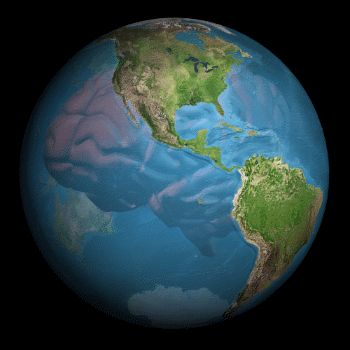Alliances with Human Rights
David Smiley
[Reprinted from Progress, January-February
2003]
In "Georgism in Trouble" I identified today's main agents
of change as international, the big world movements, transnational
corporations, and the larger non-governmental organisations, and I
argued that these are run by modern economists and international
lawyers. I argued further that Georgist proposals for social reform
need to be couched in their languages and embedded in their programs,
not those of Georgism. Nowhere is this more important than in the
field of human rights.
HUMAN RIGHTS
The Universal Declaration of Human Rights (UDHR) was adopted by the
UN in 1948. Its implementation was then delayed for 40 years by
disagreements. Many of these disagreements remain unresolved, and some
rights are still regarded as undefinable and undeliverable. The West
favoured political rights and the socialist countries favoured
economic rights. The third world then insisted that many rights are
not universal but culturally relative, and came up with its own set of
"Solidarity Rights". Since these contain embarrassing
demands for compensation for colonialism and rights to their own
natural heritage, the UN, the World Bank and the IMF have responded
with various smokescreens, most recently the Global Compact, the
Comprehensive Development Framework, and the Poverty Reduction and
Growth Facility, all instead of addressing the fundamental problems.
THE FAILURE OF HUMAN RIGHTS
The mass of conventions, treaties and tribunals of human rights sits
alongside another international regime, that of economic development.
These have relied unsuccessfully on capital injection to deliver
economic rights and legislation to deliver political rights, rather
than attempting to achieve both through fundamental reform. And so, "Count
up the results of 50 years of human rights mechanisms, 30 years of
multi-billion dollar development programmes and endless high level
rhetoric and the general impact is quite under-whelming … this is
a failure of implementation on a scale that shames us all." (Mary
Robinson, UN Human Rights Commissioner, quoted in Geoffrey Robertson,
Crimes against Humanity, 1999, p. 32). Why have human rights
failed?
Article 2.7 in the UN Charter essentially prevents collective
interference in the domestic jurisdiction of the sovereign state.
Although sovereignty is widely regarded as one of the causes of
failure, its effects have been poorly analysed. Article 17 of the
Universal Declaration of Human Rights in cases where the right to own
scarce resources such as property in land and natural resources
(without corresponding obligations to pay economic rent and correct
for negative externalities) is quite capable of distorting the
intended outcomes of most of the other 29 articles. The effects of
article 17 on human rights has also been poorly analysed.
SOVEREIGNTY
"...it is doubtful whether any single word has ever caused so
much intellectual confusion and international lawlessness"
(Akehurst, M., 1987,
A Modern Introduction to International Law, p. 15). The
sovereign state in international law comprises a population, a
territory, and a recognised government. As we shall see, the first
maps uncomfortably onto the second wherever there has been conquest
and migration. The third is a matter of recognition, itself "one
of the most difficult topics in international law...a confusing
mixture of politics, international law and municipal law"
(Akehurst).
ACQUISITION
The main modes of acquiring territorial sovereignty, borrowed from
Roman law, are cession (transfer by treaty), occupation (of terra
nullius), conquest (by international war), and secession (by civil
war). The first three are usually imposed by intruder groups. The
fourth may often be an indigenous response to allocations of land and
natural resources imposed by intruder groups, but sometimes simply a
rent seeking coup by a regional group perceiving a comparative
advantage in that region's position or resources. Intruder groups have
defined most of the world's existing political boundaries, often in
conflict with the natural boundaries of anthropology and geography.
Internal indigenous and migrant populations may thus be consigned to
areas of low land value for a variety of economic, political and
cultural reasons.
Recognition. The main political principles applied to the recognition
of the sovereign state are geographical contiguity, historical
continuity, and self-determination. We have seen that the first two
principles, reinforced by a further principle of non-interference,
have nothing positive to say on differential human rights or land
rights within the sovereign state. Thus municipal law can deny land
rights to a "stolen generation" of aboriginal children who,
as a result of protective custody, can no longer claim a historically
unbroken connection with the land. And the results of
self-determination are critically dependent on the definition of
self. For example, expressions of self-determination such as
independence from colonial rule, nationalisation of foreign property,
etc., may simply amount to massive asset transfers from one rent
seeking monopoly structure to another.
PROPERTY RIGHTS
Let us now look at the second possible reason for the failure of
human rights: property rights. Bernard Shaw describes the link between
sovereignty and property rights in a single sentence: "Imagine a
small island to which castaways swim as ships are successively wrecked
on a nearby reef; eventually the earlier occupants will be able to
present new castaways with the choice: be our slave, or keep swimming."
Remembering that the sovereign state comprises a population and a
territory, let us expand Shaw's parable. Let us start with three
sub-populations of the sovereign state, the indigenous peoples who
were there first, intruder groups, usually becoming dominant, and
subsequent migrant groups, usually becoming known as ethnic or
minority groups. All these sub-populations, and foreign populations
trading with the sovereign state, create rental values in land and
natural resources in proportion to the levels of population and
economic activity. These rents may be explicitly collectable, or arise
implicitly in positional advantage over surface and subterranean
resources. Examples of positional advantage include the control of
trade routes and ports, water resources, and oil and gas reserves and
pipelines.
Indigenous populations. India has a tribal population of some 20
million usurped by Aryan and Mongol invasions. Latin America has an
indigenous population of some 35 million forest Indians and the
remnants of mountain civilisations. Far larger are the indigenous
populations of Africa and South-East Asia. Far fewer but perhaps
closer to reconciliation are the North American native Indians and
Australasian Aborigines. All these indigenous peoples were the prior
occupants, they were "there first", and the land disputes
are between them and the legacies of subsequent intruders. But prior
occupancy is not always clear cut. It has been said that there are no
aboriginals in the Mediterranean region, yet each layer of invasion
and occupation has produced ethnic groups involved in disputes over
land rights, similar to those involving indigenous peoples elsewhere,
which can be traced back thousands of years.
INTRUDER POPULATIONS
Major intrusions resulted in the Classical, Moorish, Mongol, Ottoman
and European empires. Since contemporary territorial boundaries, and
the land and natural resource ownership structures within these
boundaries reflect the European colonial empires, for our purposes
here we will equate intruder populations with Europeans. In very large
parts of the world the intruders have now left. But departing
colonials sometimes retain rights in land and natural resources, or
transfer them to other landlords, indigenous or transnational.
MIGRANT POPULATIONS
Where intruders displace populations, two migrations may result. The
first is at best to traditional lifestyles in reserves or native title
regions, at worst to degraded lifestyles in plantations, homelands,
Bantustans, control zones, transit camps or rural shanty towns. In all
cases these migrants forfeit the natural opportunities they leave
behind. Some may subsequently undertake a second migration, enticed or
coerced into the wage economies of the modern intruder sector. Those
who are educationally and culturally disadvantaged squat in
urban-peripheral shanty towns or inner-city ghettos, while others,
capable of penetrating the market economy, now pay substantial rents
for occupancy on the lands their ancestors may have originally owned.
And these rents will be raised even further by the arrival of
migrants, refugees, asylum-seekers and displaced people, from other
countries, often in similar economic circumstances of expropriation,
finally occupying what are known as ethnic ghettos.
CONCLUSION
It seems that sovereignty of the nation-state interacts with and
reinforces monopolies in property rights, especially of land and
natural resources, as a major cause of human rights violations, for
example in the colonial past, and in nearly every contemporary
political flashpoint. Following the example of domestic law in the
area of compensation, we may now be seeing a similar explosive growth
in international compensation claims. Starting from relatively small
numbers of North American and Australian Aborigines, it is in
principle possible that claims relating to historical human rights
abuses may in the future be lodged by 40 million indigenous peoples,
100 million untouchables, and billions more in relation to slavery,
colonialism, and war. For all the world's national and international
territorial violations and human rights injustices, for those alive
today the compensatory sums could be astronomical, the identification
of legitimate payers and payees virtually impossible, and the
political difficulties virtually insurmountable, as illustrated in the
recent World Conference Against Racism.
Most countries today need to rewrite their histories in recognition
of and reconciliation for past wrongs. But instead of futile attempts
to compensate for past wrongs it would be far more efficient and
equitable to install now a practical legislative instrument to remove
future wrongs. This should address inequity and injustice in
allocations of land and natural resources, increase rather than
decrease economic efficiency, disturb property rights as little as
possible, and reduce the apparently self-reinforcing complexity of
contemporary human rights legislation. A tax reform satisfying all
these requirements is known as Land Value Taxation.
This article carries a warning that it may contain misconceptions
regarding human rights and international law. If you know a lawyer, or
anyone involved with human rights, get him or her to check these out.
This may even lead to the sort of professional alliance I am
advocating.
|











